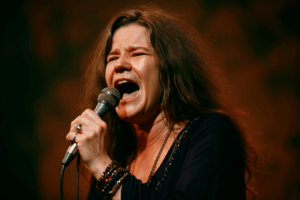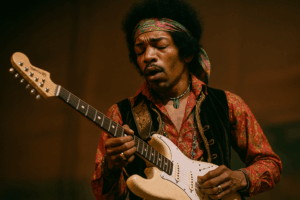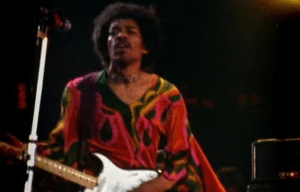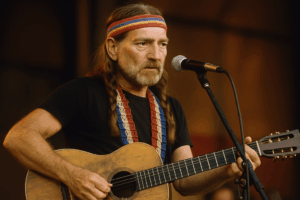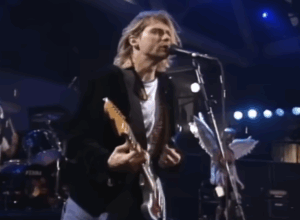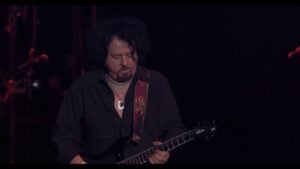Famous Songs You Know and Love That Hide Dark Historical Stories

Nirvana for MTV Unplugged - Nirvana / YouTube
Songs often carry more than just melodies and catchy hooks—they can also preserve stories that would otherwise fade into the background. Beneath the surface of a familiar chorus lies a world of meaning, sometimes tied to moments of struggle, loss, or haunting memories. What seems like a feel-good anthem at first listen may actually be rooted in grim realities that shaped lives and history.
Music has long served as both an escape and a reflection. While audiences hum along to tracks that dominate the radio or playlists, the deeper layers are often overlooked. Songwriters, however, frequently draw from the darker corners of history, using rhythm and rhyme as a way to process and share truths that are difficult to face head-on.
That contrast—the upbeat tone paired with sobering inspiration—is part of what makes these songs endure. They entertain, but they also remind us of the human experiences behind them. Looking closely at their origins reveals that some of the most beloved songs are not just about universal themes of love and loss, but also hidden accounts of war, tragedy, and survival.
Polaris – “Hey Sandy”, Music From The Adventures of Pete & Pete (1999)
At first listen, “Hey Sandy” sounds like a dreamy slice of ‘90s indie rock nostalgia, immortalized as the theme for Nickelodeon’s quirky series The Adventures of Pete & Pete. Its jangly guitars and hazy lyrics conjure the carefree spirit of childhood summers, a vibe that made it seem tailor-made for kids. Yet hidden in the mumbled delivery of singer Mark Mulcahy is a far darker reference than its audience ever suspected.
For decades, fans tried to decipher what Mulcahy was actually saying, as the words seemed intentionally slurred. Eventually, interpretations revealed that the lyrics reference Sandra Scheuer, a student fatally shot during the Kent State shootings of 1970. The tragic incident claimed four lives and remains one of the darkest moments of American campus protest history.
Mulcahy has never publicly confirmed this interpretation, insisting on keeping the lyrics shrouded in ambiguity. Still, the possibility that a Nickelodeon theme song contained echoes of such a violent chapter in history is unsettling. It’s a reminder that even in works meant for lighthearted contexts, the shadows of real events can find their way in.
Crosby, Stills, Nash & Young – “Ohio”, Single Release (1970)
If “Hey Sandy” obscured its historical weight, Neil Young’s “Ohio” made its message brutally clear. Written in response to the same Kent State tragedy, the song directly addresses the killings with the repeated refrain, “four dead in Ohio.” Young’s raw lyrics captured the anger and grief of a generation watching fellow students die for protesting a war they did not support.
The song didn’t shy away from political critique either. Young explicitly called out the Nixon administration, linking the violence at Kent State to the larger climate of government oppression during the Vietnam era. Because of this, radio stations were reluctant to play the track, fearing its pointed criticism would stir further unrest.
Despite limited mainstream airplay, “Ohio” resonated deeply among young listeners and spread through underground channels. Over time, it became one of Crosby, Stills, Nash & Young’s defining works, ranked among Rolling Stone’s greatest songs of all time. Its enduring power lies in its refusal to dilute its outrage, making it one of rock’s most direct and unforgettable protest songs.
DEVO – “Jocko Homo”, Q: Are We Not Men? A: We Are Devo! (1978)
While Neil Young responded with fiery protest, the members of DEVO processed Kent State’s horrors in a stranger, more philosophical way. Founders Gerald Casale and Mark Mothersbaugh were present on campus during the shootings, and the trauma reshaped their worldview. Casale, who witnessed his friends die, abandoned his hopeful “flower child” outlook and began to see humanity as regressing rather than progressing.
This perspective became the seed of DEVO’s central idea: de-evolution. Rather than evolving into higher beings, the band believed people were slipping back into primitive, violent instincts. Their first song, “Jocko Homo,” gave this theory its most striking expression. Even the title, which roughly means “ape-man,” reflected their view of humanity’s regression.
Unlike traditional protest songs, “Jocko Homo” did not rail directly against the government or specific leaders. Instead, it questioned the very trajectory of human nature itself. Through its repetitive chants and bizarre performance style, the track turned grief into a satirical philosophy that shaped DEVO’s entire career.
Nirvana – “Polly”, Nevermind (1991)
Nirvana’s “Polly” is one of the band’s darkest songs, and unlike many of Kurt Cobain’s works, it wasn’t rooted in his personal turmoil but in a horrifying true story. The song’s lyrics are drawn from the perspective of Gerald Friend, a convicted rapist and kidnapper whose crimes shocked Washington State in the 1960s and again in the 1980s.
Friend had been sentenced to 75 years in prison in 1960 for raping and torturing a young girl, but he was paroled after just two decades. In 1987, he abducted another 14-year-old girl, who managed to escape and expose his crimes once again. The brutality of the case drew national headlines and deeply disturbed Cobain.
Rather than sensationalizing the violence, Cobain used “Polly” to force listeners into the unsettling mindset of a predator, creating one of Nirvana’s most chilling and confrontational tracks. Today, the song is seen as both a reflection of Cobain’s empathy for victims and his anger at systems that allowed such crimes to repeat.
Billie Holiday – “Strange Fruit,” Single Release (1939)
Few songs have ever confronted dark history as unflinchingly as “Strange Fruit.” Written as a poem in 1937 by Abel Meeropol, a Jewish schoolteacher, it was later set to music and famously performed by Billie Holiday in 1939. Its haunting imagery of “black bodies swinging in the Southern breeze” was a direct reference to lynching in America.
Meeropol was inspired by a widely circulated photograph of two Black men who had been lynched, their bodies hanging from a tree while a crowd looked on. The comparison of corpses to rotting fruit made the violence impossible to ignore, and Holiday’s mournful delivery only deepened the impact.
Though controversial at the time, “Strange Fruit” became a defining protest song of the 20th century. It forced audiences to confront the brutality of racial violence in the United States and is still regarded as one of the most powerful songs ever recorded. Unlike other tracks that bury their history under metaphor, this one wears its horror openly—and that is what makes it unforgettable.
Pearl Jam – “Jeremy”, Ten (1991)
“Jeremy” was written by Eddie Vedder after he read about the suicide of 15-year-old Jeremy Delle, who shot himself in front of his English class in Richardson, Texas, in 1991. The tragedy shocked the community and inspired Vedder to write about the incident, combining it with memories of a similar shooting that had taken place at his own high school.
The lyrics reflect the isolation and despair that Jeremy experienced, with the chorus serving as a haunting reminder of how overlooked pain can erupt in devastating ways. The music video for “Jeremy” attempted to capture this atmosphere, but due to MTV restrictions, the visuals were edited to avoid explicit depictions of violence.
Even with the edits, the video made a lasting impact. Its closing imagery of shocked classmates implied the horror behind the story without directly showing it, making “Jeremy” one of Pearl Jam’s most powerful and socially conscious songs. Today, it stands as both a classic of 1990s rock and a sobering commentary on youth violence and mental health.
The Boomtown Rats – “I Don’t Like Mondays”, The Fine Art of Surfacing (1979)
The Boomtown Rats’ hit “I Don’t Like Mondays” was inspired by a school shooting in San Diego in 1979. Brenda Ann Spencer, a 16-year-old girl, opened fire on an elementary school across the street from her home, killing the principal and a custodian while injuring nine children and a police officer.
When questioned about her motive, Spencer replied, “I don’t like Mondays. This livens up the day.” The disturbing statement became a focal point of media coverage and highlighted the senseless nature of the violence. She was sentenced to life in prison and has since been repeatedly denied parole.
Bob Geldof, the band’s lead singer, wrote “I Don’t Like Mondays” shortly after hearing the news. The song became a number-one hit in the UK and Ireland, though it saw limited play in the United States due to its sensitive subject matter. It remains one of the most notable examples of a pop song directly tied to a specific real-world tragedy.
The Cranberries – “Zombie”, No Need to Argue (1994)
“Zombie” was written by Dolores O’Riordan in response to the 1993 Warrington bombing in England, carried out by the IRA. The attack killed two young boys and injured dozens, sparking outrage and grief across both Ireland and the UK. O’Riordan used the song to condemn the cycle of violence and highlight the innocent lives caught in political conflict.
The lyrics reference “bombs” and “guns” directly, making “Zombie” an unusually blunt protest song for the mainstream rock charts. O’Riordan also tied the events of the 1990s to earlier tragedies such as the 1916 Easter Rising, drawing a line between Ireland’s long history of unrest and its ongoing toll on civilians.
Although initially criticized by some as too simplistic for such a complex issue, the song quickly gained international attention. “Zombie” became The Cranberries’ biggest hit, topping charts worldwide and solidifying the band’s place in music history. Its enduring popularity reflects both its powerful sound and its poignant message about the human cost of violence.
Iron Maiden – “Two Minutes to Midnight”, Powerslave (1984)
Iron Maiden’s “Two Minutes to Midnight” takes its name from the Doomsday Clock, a symbolic measure of how close humanity is to global catastrophe. In 1953, after both the United States and the Soviet Union tested hydrogen bombs, the clock was set to two minutes to midnight—the closest point to theoretical nuclear destruction at that time.
Bruce Dickinson, the band’s lead singer and one of the song’s writers, used this imagery to address the constant threat of war during the Cold War era. The lyrics portray conflict as both inevitable and destructive, criticizing political leaders who escalate tensions while ordinary people face the consequences.
Musically, the song combines Iron Maiden’s signature galloping riffs with apocalyptic themes, creating a track that is both energetic and ominous. “Two Minutes to Midnight” has remained a staple of the band’s live shows and continues to resonate as a reflection of anxieties about nuclear war and global instability.














